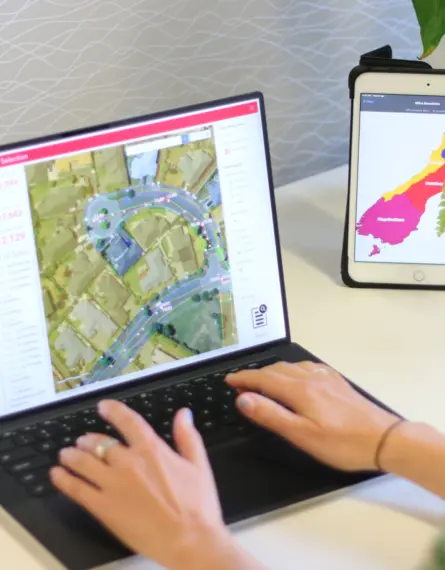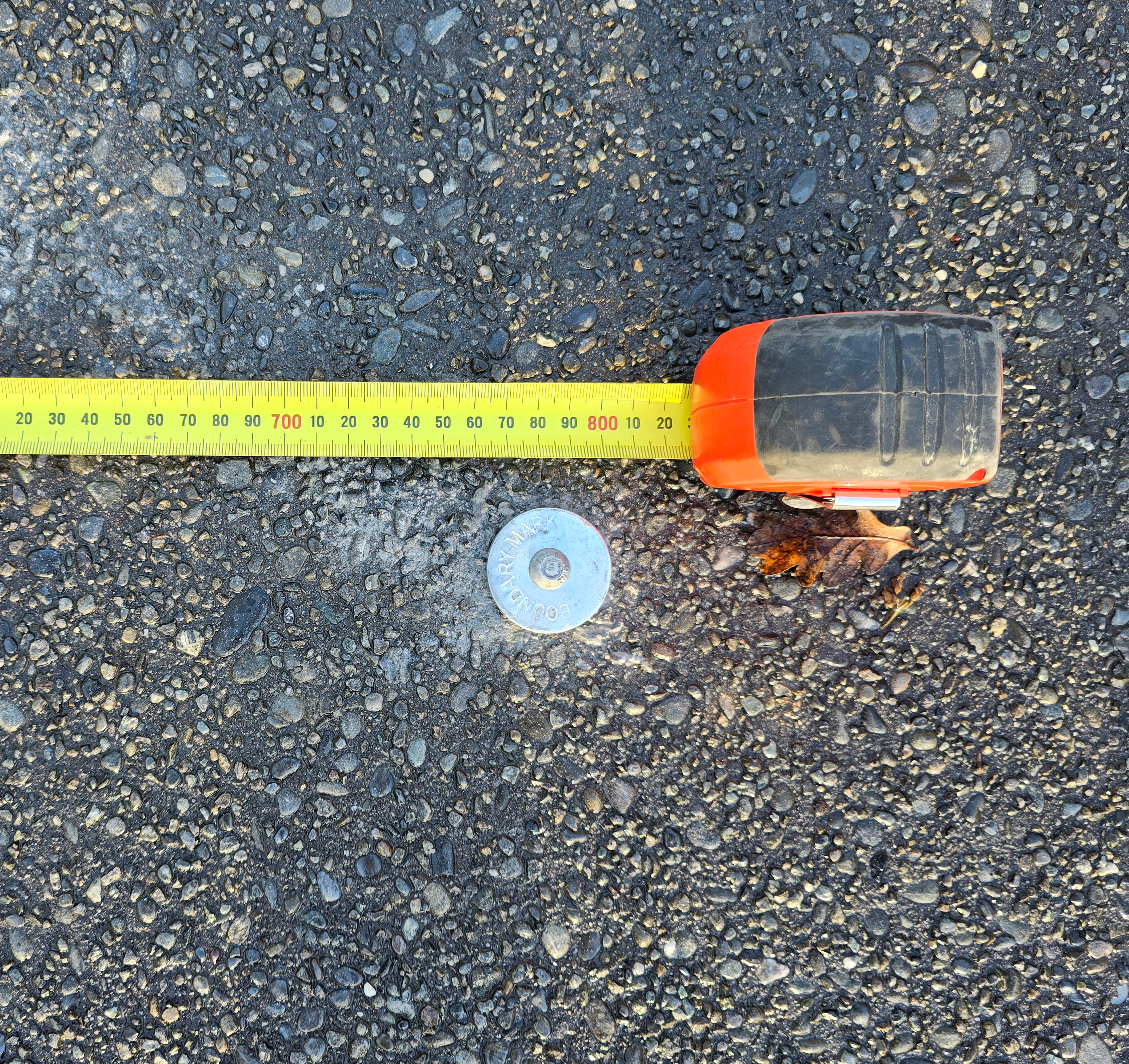
Everything You Need to Know About Boundary Pegs in New Zealand
Boundary pegs in New Zealand are more than white stakes in the ground; they legally define property boundaries, ownership rights, and responsibilities. This guide explains what boundary pegs are, how to find them, the legal rules around altering them and why protecting them is vital for property owners.
26 Aug 2025 | 4 min read
Why boundary pegs matter
Boundaries define ownership.
In New Zealand, every title is pegged out by a licensed cadastral surveyor using square wooden or plastic pegs that are usually painted white.
The locations of those pegs are recorded electronically in Toitū Te Whenua’s (Land Information New Zealand LINZ) Landonline survey database.
They are more than just pieces of timber: they underpin the land title system and can determine who owns a strip of land, who is liable for maintaining a right‑of‑way, or even which trees belong to which farmer.
In short, knowing where your boundary pegs are and following the legal rules around them protects your investment and avoids disputes.
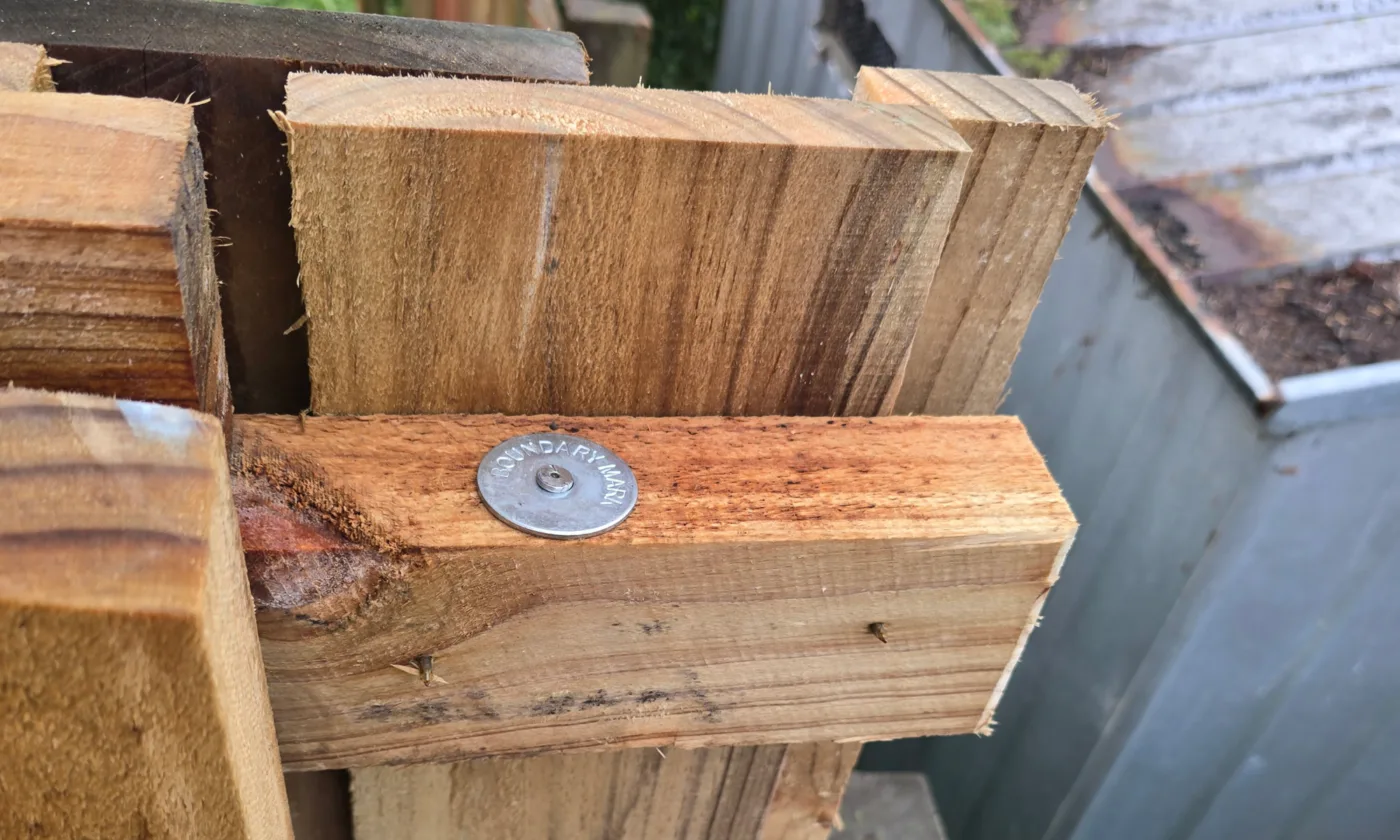
What are boundary pegs?
Boundary pegs (sometimes called survey pegs or boundary markers) are physical markers (monuments) placed at the corners of a parcel of land. A peg marks the change in direction of a boundary line. A line peg may also mark a straight boundary line on the crest of a hill where corners are not intervisible.
These pegs might be obvious wooden stakes at the surface, or they may be buried discs or metal rods used by surveyors.
Toitū Te Whenua (LINZ) notes that survey marks include nails set in concrete, buried steel rods, spikes or tubes, and marks under covers.
Because some pegs (or boundary monuments) are below the surface and can be disturbed by digging, it is important to know where they are before you carry out any work.
How to find your boundary pegs in NZ
Locating your boundary pegs yourself is not always straightforward, especially if the fence line does not align perfectly with the legal boundary.
The following steps (taken from surveying professionals) will help you get started:
1. Check the official records
Obtain a copy of your certificate of title (or record of title) which should include a title plan or diagrams. These documents show the dimensions for each boundary line.
For older titles, the distances may be in links rather than metres; conversion tools are available on the Land Information NZ (LINZ) website.
2. Search at the corners
In urban areas, fences are often close to the boundary. Start by carefully digging around the corner fence posts. A boundary peg may be older than you are, so dig gently to avoid damaging it. Measure the distance between fences and compare it with your plan to estimate where the pegs should be. Remember that measurements should be taken horizontally, not along the slope of the ground.
3. Use online tools cautiously
Toitū Te Whenua (LINZ) provides the NZ Survey Boundary Marks data layer showing the locations of many boundary marks. Not all boundary marks have a physical monument (e.g. a peg). Some boundary marks may be ‘unmarked’ for a particular reason. While useful, these datasets can’t substitute for a physical survey and may not reflect recent changes.
4. Engage a licensed surveyor
If your pegs are missing, buried, or you suspect they are in the wrong place, only a licensed cadastral surveyor can confirm their position as reliable or not, or replace them if need be. Attempting to mark or replace pegs yourself can introduce errors and potential legal ramifications.
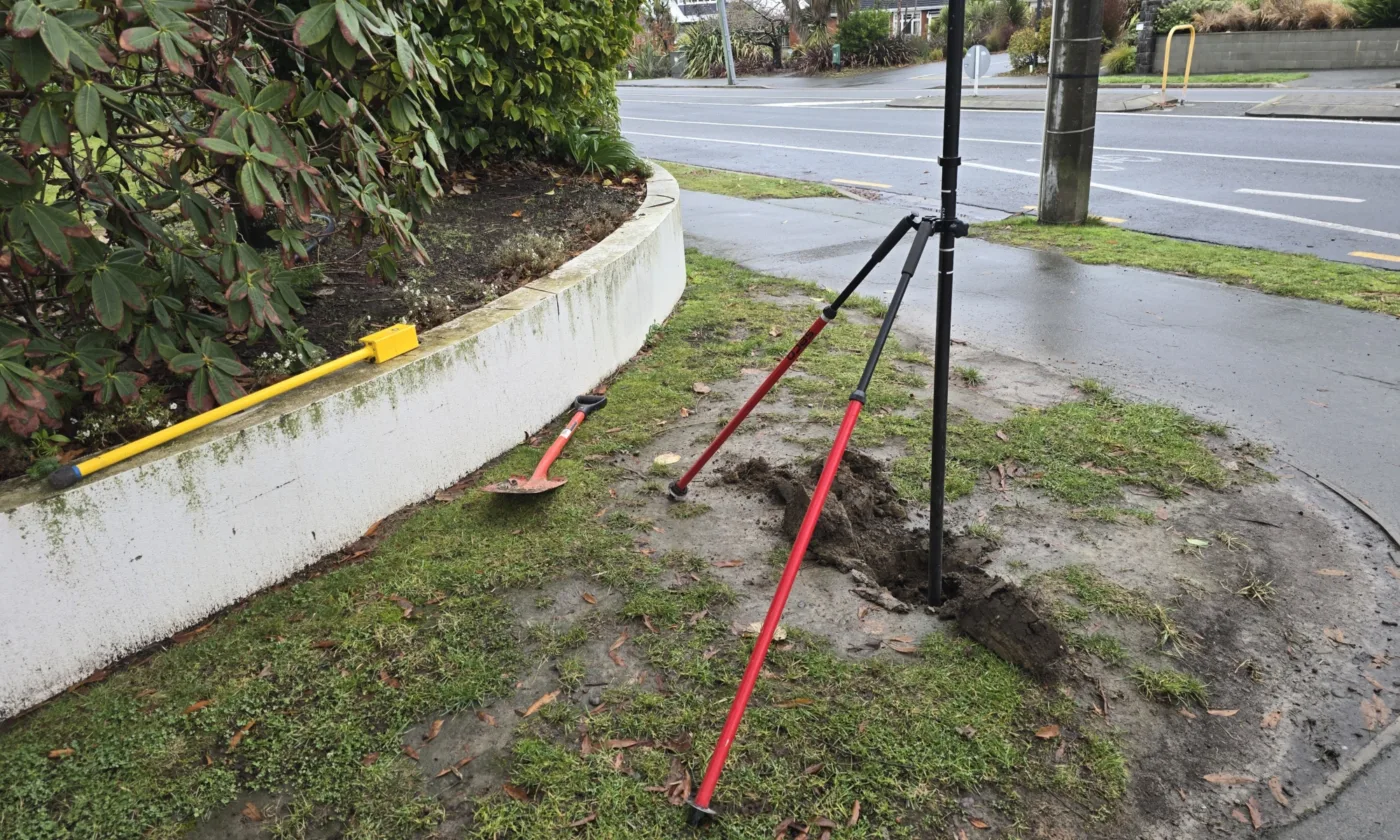
Legal rules around removing or altering pegs
Is it illegal to remove a boundary peg?
Yes — and it’s a common misconception that causes issues on sites across New Zealand.
At Eliot Sinclair, we frequently see boundary pegs disturbed or removed during construction, drainage works, or fence installation — often unintentionally. But whether done knowingly or not, altering or removing a boundary mark without authorisation is a breach of the law.
Under Section 55 of the Cadastral Survey Act 2002, it is an offence to knowingly take, destroy, or alter the position of any official survey mark. The maximum penalty is a fine of up to $2,000. These survey marks (commonly called boundary pegs) are protected because they define the legal extent of land ownership. Even minor changes can lead to disputes, project delays, or the need for costly re-surveying.
Only a licensed cadastral surveyor — or someone under their direct instruction — is legally allowed to place, remove, or reposition a boundary peg. If you’re planning siteworks that could affect one, we strongly recommend engaging a surveyor to assess and protect the marks ahead of time.
Who pays for a boundary fence?
Under New Zealand’s Fencing Act 1978, adjoining occupiers are liable to contribute in equal proportions to the cost of building or repairing an “adequate” boundary fence.
The Act prescribes a formal notice process if neighbours can’t agree, but the basic principle is shared responsibility.
There are exceptions for swimming‑pool fencing and other specialised cases, so it is worth seeking advice if you are planning major work.
FAQs
How do I find the boundary lines of my property in NZ?
Start with your title plan or diagram attached to the record of title – this will show the dimensions of each boundary.
Use the diagram in conjunction with existing fence lines, then carefully dig at the corners to locate the peg. It’s important to note that not every boundary has a wooden or plastic white peg. Others such as aluminium discs, metal spikes, or fence posts may represent the boundary.
If you cannot find the boundary pegs (monuments) or are unsure, a licensed surveyor can undertake a boundary redefinition survey to confirm the boundary angles and lines.
How to identify boundary pegs?
Most boundary pegs are square, wooden pegs painted white and set at ground level. In some cases, they may be metal spikes, rods or aluminium discs set just below or just above the surface. A surveyor can tell you what type of marker to look for in your area.
Is it illegal to remove boundary markers in NZ?
Yes. Only a licensed surveyor or someone authorised by them may remove or reposition a boundary peg. The Cadastral Survey Act 2002 provides for fines if survey marks are altered or destroyed.
How much does a boundary survey cost in NZ?
Costs vary depending on the size of the property, its location, and the complexity and age of the underlying survey data. In simple urban settings a redefinition survey may only require locating existing pegs, while in rural or older areas extensive field work can be required. For an accurate estimate, contact a licensed surveyor such as Eliot Sinclair’s land surveying team or our wider survey and spatial services.
Who pays for a boundary fence in NZ?
The Fencing Act 1978 generally requires adjoining occupiers to share the cost of constructing or repairing an adequate boundary fence. If you propose a new fence, you must serve a fencing notice on your neighbour outlining the proposed fence and its cost; they can object or agree. If you are unsure, seek legal advice.
What do surveyors use to mark boundaries?
Surveyors use a mix of visible and hidden boundary marks (or monuments): the familiar white pegs on property corners, metal spikes, rods or tubes called traverse marks buried at spade depth to re‑establish the pegs, and various discs or plates set into concrete. These marks form part of the national survey system and must be protected.
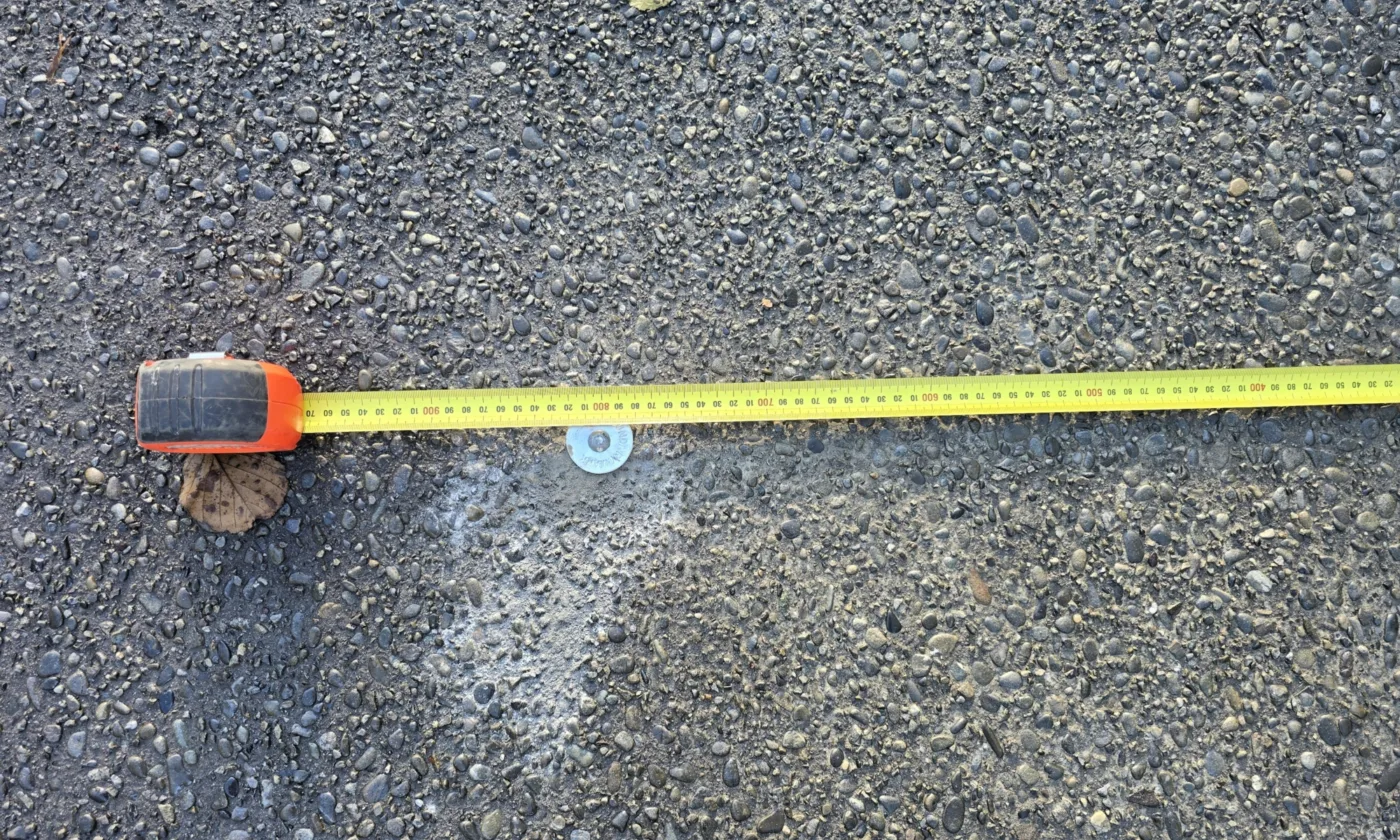
Conclusion
Knowing where your boundary pegs (or boundary monuments) are – and respecting their legal status – is essential for any landowner in New Zealand. If you’re planning new fencing, building work or simply want peace of mind, start by consulting your title and checking the boundary marks.
Use the LINZ data layer for guidance, but always confirm on the ground. Most importantly, never move or remove a boundary peg yourself; call on a licensed cadastral surveyor and, if fencing is involved, be prepared to share the costs with your neighbour. Taking these steps will keep your boundaries clear, your projects compliant, and your relationships with neighbours intact.
